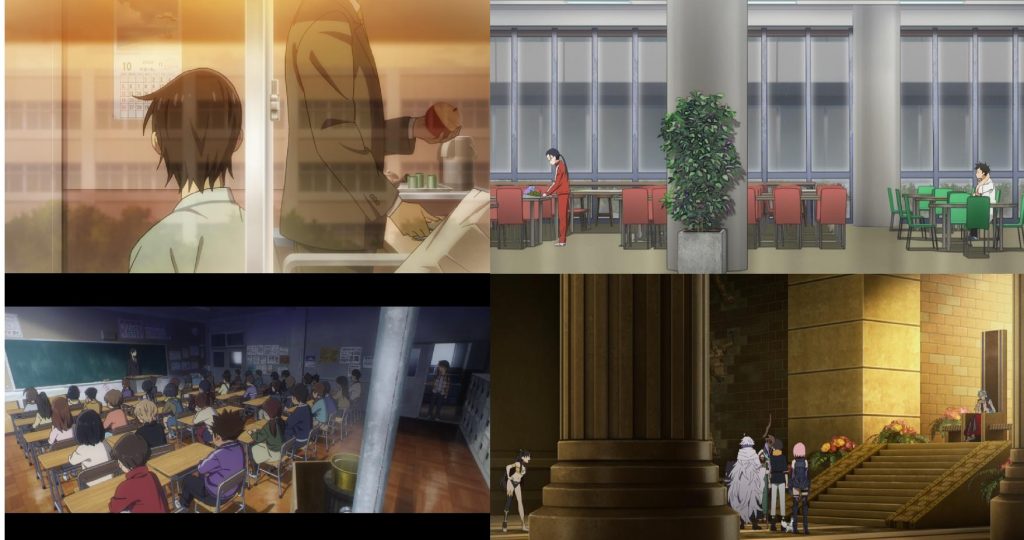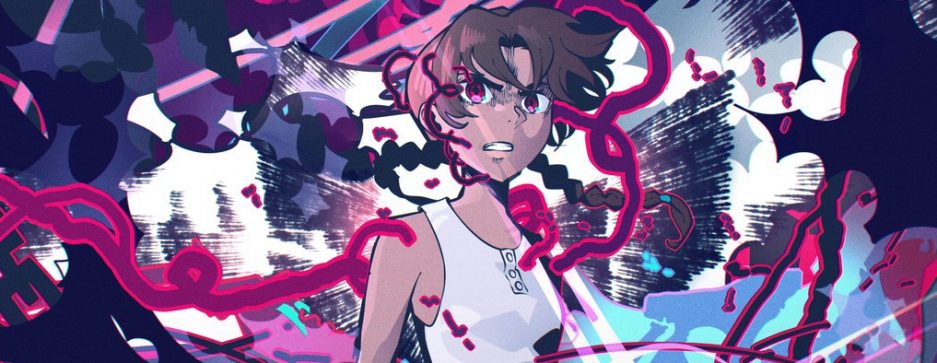As explained in an earlier post, it’s not that uncommon to find production-related people climbing to a higher position such as episode director or even series director. Even among those cases Toshimasa Ishii stands out as a particularly brilliant individual. Starting his career as a production assistant at A-1 Pictures around the beginning of the decade, it took Ishii less than 4 years to achieve his debut as an episode director, with his storyboarding debut following shortly thereafter on Space Brothers. That trend would continue with the 18th episode of Shigatsu wa Kimi no Uso. Ishii is already trusted enough to handle both the board and direction for such an important episode which dedicates its entire first half to the long-awaited duo performance.
Despite coming early in his career, the episode already shows a lot of Ishii’s strengths as a director. He displays a control of the rhythm that allows him to capture the essence of the characters, the atmosphere and thematic points at stake in his episode. The performance is divided in three parts, and Ishii took care to reflect that in his directing choices. The first one is almost exclusively comprised of long panning shots, bringing a feeling of peace.Yet it’s also a bit too slow and boring. That’s why Kosei suddenly changes the rhythm, destroying that calm with chaos. Ishii illustrates that with intense and troubled expressions, more hectic acting, and oppressive low angle layouts where Kosei dominates the screen. The last part starts with Nagi catching up to Kosei. The tempo is faster than ever but they’re finally in sync, as illustrated in this striking shot: my favorite of the episode!

Ishii’s individual episodes always stand out for his smart visual storytelling, framing, and comedic timing – things he would put to great use when again we find him quickly climbing the ladder to work under a director whose style is quite similar to his own: Tomohiko Ito! Their first collaboration was on the 8th episode of Gate, where Ito did the storyboard and Ishii would direct it. It’s a low priority and not-so-remarkable episode (though it still has some neat ideas), but that collaboration will reach its true potential on Ito’s Erased where Ishii was promoted to assistant director.

is one of Ishii’s most used trick, and one I frankly love.
Erased is a polarizing series for most… However, nobody can deny the production at its best managed to captivate like no other, with some episodes standing among the most tense TV anime has to offer. The second episode would stand as one such instance, being highly praised and also finally making people aware of the genius behind the name Toshimasa Ishii. This episode can be easily considered the peak of his career (so far) and the same can be said about its animation director: Kiminori Ito. I’ll eventually talk about Ito at length one day, but for now I’ll just settle with saying that Ito is an incredible and respected artist at A-1 Pictures, whose knack for three-dimensional drawings and meticulous gestures elevated Ishii’s episode to new heights. The episode feels really cinematic – the directing choices are meticulous and the episode as a whole is smartly constructed. Tracking shots giving natural continuity, outrageous layouts conceptualizing space in a tangible way, neat transitions: an experience in and of itself, really. This likely led Ishii to assist Mamoru Hosoda on his movie Mirai, similar to how Tomohiko Ito assisted Hosoda for The Girl who Leapt Through Time.
But as I said before, what makes Ishii one of a kind is how he captures the essence of a scene or a series. He has the power to draw you into into the atmosphere, whether it’s a stressful scene, a touching one or the adventure of a stupid Tiger and her friends.
It’s no secret that I was a bit disappointed by Fate Grand Order Babylonia. The show is an excellent production, but I have a hard time finding it compelling outside of its biggest highlights. There were some exceptions such as episodes 3, 5, 10, 11, 12, 17 and 18 (for which you can read sakugablog excellent post). However, two of those episodes happened to be storyboarded and directed by Toshimasa Ishii himself. So let’s see how he managed to imbue life into the show!
One of the most noticeable things is the care Ishii takes to highlight the ensemble cast. His episode features a high number of wide-angle shots where you can see all or almost all of the characters. But that’s hardly groundbreaking by itself ; the real genius of Ishii is how he used that setting.
Ishii has all the characters react and interact according to their personality. You can tell he added a lot of gags in the storyboard phase, as well as making sure to use the simplified designs to his advantage by featuring more dramatic acting with exaggerated gestures and simple but straight-to-the-point expression. Another stand-out feature is his excellent comedic timing, and the way he allows some gags continue and end in the background.
As you can tell, my favorite aspect of his episode were the comedic parts, which were hilarious, sure, but Ishii also nailed the more serious scenes. The best one is Gil’s tirade, which captures the gravity of the moment but also, the august majesty of Gilgamesh. With that single cut, Ishii made the stakes of the battle obvious, even if you don’t understand Gil’s words: hence what I meant by “capturing the essence of a series.”
A week ago, Ishii was announced as the director of the adaptation of the critically acclaimed light novel 86. After being assistant director for renowned directors like Tomohiko Ito and Mamoru Hosoda, it was merely a matter of when, rather than if, he would get his own series. While I have my concern about the schedule, I’m still incredibly excited by that news. Here’s hoping Ishii can face this new challenge as successfully as he has so far!
